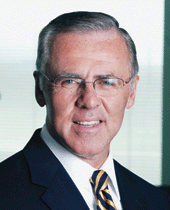Organic growth is making a comeback

The small-business recertification rule implementedlast year by the Small Business Administration is havinga profound effect on companies that depend heavily onsmall-business set-aside contracts for growth and midtieracquirers of such companies, forcing both to focus more onorganic growth.
The small-business recertification rule implementedlast year by the Small Business Administration is havinga profound effect on companies that depend heavily onsmall-business set-aside contracts for growth and midtieracquirers of such companies, forcing both to focus more onorganic growth.Midtier federal information technologycompanies ? $300 million to $800 millionin revenue ? have been heavily dependentuntil now on the formerly target-rich smallbusinessenvironment for growth by acquisitionand access to new customers andemployees with desirable skill sets andclearances. Conversely, such acquirers havebeen attractive buyers to small-businesssellers ? typically less than $75 million inrevenue ? as culturally more compatiblethan larger defense primes and platformcompanies.For midtier buyers, the recertification ruleis causing a strategic shift in their growthplans. Organic growth for most of thesecompanies has declined in recent years to 10percent or less. The large supply of affordablecompanies with small-business contractshas offered the principal means forthese companies to reconcile their annualorganic growth of 10 percent or less withWall Street's expectation of 25 percentper year. These smaller companiesare also easier to integrateand pose less risk than larger acquisitions.As a result of the rule, midtier companieshave renewed their focus on organic growthand are looking at targets that have not usedsmall-business contracts to any great extentor have migrated to mostly full-and-opencompetitions.Similarly, companies with small-businesscontract revenue of 25 percent ormore are also paying more attention toorganic growth because of the negativeimpact of the small-business recertificationrule on the universe of buyers and theirlower market valuations. Owners of small-businesscontractors are planning to staythe course until they become more marketableand the small-business contractrisk has been substantially mitigated. Untilnow, many of these companies had beenreaching a point where they hit the wall. At$40 million to $50 million in revenue, acompany had to radically redo its infrastructureand business strategy to handleinternal growth and position itself to bemore competitive in a full-and-open environment.For many owners, this was toodaunting. It took them out of their comfortzone, forcing them to consider selling.The changes businesses needed to stimulateand handle organic growth and considersmall acquisitions include: Such investments should be madebefore embarking on an acquisition trackbecause they will stimulate organicgrowth and reduce the risk of making thewrong acquisition. Organic growth isultimately less costly and risky. Theincrease in earnings before interest, taxand amortization or cash flow will alsoincrease their borrowing base to financeacquisitions.Buyers value organic growth more highlythan acquisition growth and seek targetcompanies with an organic growth rate of 15percent or more. The 2007 acquisition ofDimensions International Inc. by HoneywellInternational Inc. and the recentlyannounced acquisition of Eagle GroupInternational by Lockheed Martin Corp. aretwo deals that illustrate how sellers with alot of set-aside revenue can overcome inflectionpoints and enhance shareholder valueby successfully transitioning into a full-andopenenvironment, reworking their infrastructureand focusing on organic growth.

Rick Knop is senior managing director and
head of international investment banking at BB&T
Capital Markets, of Reston, Va.

- Upgrading their accounting systems to
Deltek Costpoint. - Adding a bid-and-proposal capability.
- Upgrading internal accounting, finance
reporting and human resources
functions. - Adding an internal acquisition and
integration capability.
Rick Knop is senior managing director and
head of international investment banking at BB&T
Capital Markets, of Reston, Va.
NEXT STORY: GSA panel on track with schedule policy

